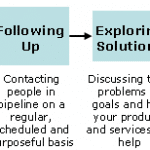These stupid marketing tricks line others’ pockets and leave you wondering what happened to your bank account.They hint at oodles of publicity, swarms of new clients, and more business than you can imagine. Alas, they don’t deliver.
Avoid these “golden” opportunities like the plague:
1. The “radio host” invitation
The pitch: You’re a personal trainer who gets a phone call or email inviting you to become a weekly host for an Internet radio show or podcast on health and wellness. You’re thrilled! Finally, word is getting out about how valuable your programs and services can be! Surely this kind of exposure is just the beginning for your business…
The catch: You have to write a check upfront for several thousand dollars to “cover production costs.” Even then, the odds are low that a potential customer will stumble across your show. The show producer typically doesn’t do any marketing – so no one’s likely to know your show even exists unless YOU do all the marketing. Plus, people who stumble across the show online can just click to listen. They don’t have to register first. That means you have no way at all to follow up with them and fold them into your normal marketing process. Finally, you could create these shows yourself for far less money than you’re paying for “production costs.” And last but not least, you have no guarantee that these folks won’t just take your money and run.
A better alternative: If your clients would really appreciating hearing podcasts from you, it’s easy and inexpensive to record and distribute your own.
2. The “published author” opportunity
The pitch: You’re a dietitian in private practice. You get a call from someone who says you could make a nice chunk of change by publishing a book containing your unique approach to health and wellness. Or perhaps they tell you that they’ve been impressed by what they’ve heard about you and would like to include you in an upcoming book profiling several emerging health and wellness experts. They entice you with the promise of publicity (after all, you’ll be a published author!), greater credibility, and the chance to make money by selling your book to clients and members.
The catch: You have to pay several thousand dollars upfront to participate in this opportunity. Your book will never appear in any mainstream bookstore and the publisher will do nothing to promote it other than perhaps giving you a list of marketing tips. You’ll probably give away far more copies than you sell.
A better alternative: You could simply write down what you have to say and “print” it in electronic PDF format. If you really want hard copy, self-publish it yourself via Createspace for much less than you’d pay these guys. Plus, you’ll be able to distribute it on Amazon.
3. The “magazine headliner” chance
The pitch: You manage a small chain of fitness centers. Or perhaps you’re the president of a company that makes specialty fitness equipment. You get a call offering your the opportunity to be the featured, headline story in an industry publication. There’ll be an in-depth interview or Q&A with your key staff members. You’ll have the chance to include all your key messages, customer successes, and more! Loads of free publicity – and being covered by an independent publication will enhance the reputation of your wellness business.
The catch: You have to pay several thousand dollars upfront to be the headliner. The magazine itself is unimpressive – cheaply produced on low-quality paper. Or, it goes out via email and usually hits the junk email folder.
If you sell to consumers, your potential customers don’t read these publications and in fact never heard of them. Sure, you can hand out copies – but most of the folks who’ll grab ’em are already customers. They’re not effective marketing tools with potential customers because the articles are relentless self-promoting, rather than focusing on the needs of the prospective client.
And if you sell to businesses, that’s the worst-case scenario. Other businesses in the industry aren’t fooled for a minute – they KNOW you paid to be the headline story!
A better alternative: You’ll get more and better publicity if you build relationships with local media and community organizations so that your wellness business naturally gets favorable (and free) publicity. And you’ll find more success in winning over prospective customers if you create marketing materials that are genuinely responsive to their needs and buying process. That includes your website, which should be user-friendly and search-engine friendly.
4. The “featured online columnist” invitation
The pitch: You’re a specialist in active aging. You receive an email from someone who praises your insights into health and wellness. He invites you to become a featured columnist on his widely-read health and wellness website or blog. You’ll gets loads of free online publicity without having to pay a dime! Reporters and potential clients alike will trip over themselves to reach out to you!
The catch: Good news! This one wastes your time – but at least it doesn’t cost you money. His primary goal is attract site visitors who will click on ads on his website for various health and wellness products – usually dubious weight-loss gimmicks, highly questionable supplements, and the like. He doesn’t care if they buy or not – he gets paid for clicks through advertising programs offered by Google, Yahoo and others.
He wants to use your content so that his site appears to be a high-quality site filled with non-spammy content. That way the site will avoid being demoted in search results. However, he’ll do nothing to market or promote the site himself, and you’ll almost certainly never get a single new customer through this website.
A better alternative: If you’re writing great articles on health and wellness, post them on your own website, submit variations of those articles to widely-indexed article submission engines like EzineArticles.com, offer them to suitable legitimate publications, use them in your marketing materials, and/or include them in your email or printed newsletter.
5. The “passive income” promise
The pitch: You’re a roving yoga instructor. While surfing the Internet late one night, you come across a website that promises to show you how to create and sell your own e-book (downloadable electronic book in PDF format) to generate lots of passive income. The site offers a do-it-yourself kit for $50 to several hundred dollars. The kit’s simply an e-book with 100+ pages that promises advice on how to create, distribute and sell your e-book. You usually get several other downloadable “special reports” to sweeten the offer.
The catch: It’s simple and cheap to write and produce your own e-books. See #2 above. It’s not hard to set up a very simple website. The difficult part of selling e-books or any other products online is marketing them. Online selling requires expertise in online marketing and search engine optimization. After all, billions of websites exist. How will anyone ever stumble across yours? The kit doesn’t help you solve that problem.
A better alternative: If you’ve really got a book’s worth of health and wellness insights, consider selling your e-book online via your own website to your existing customers. And check out the other strategies we suggest in #2 and #4 above.



